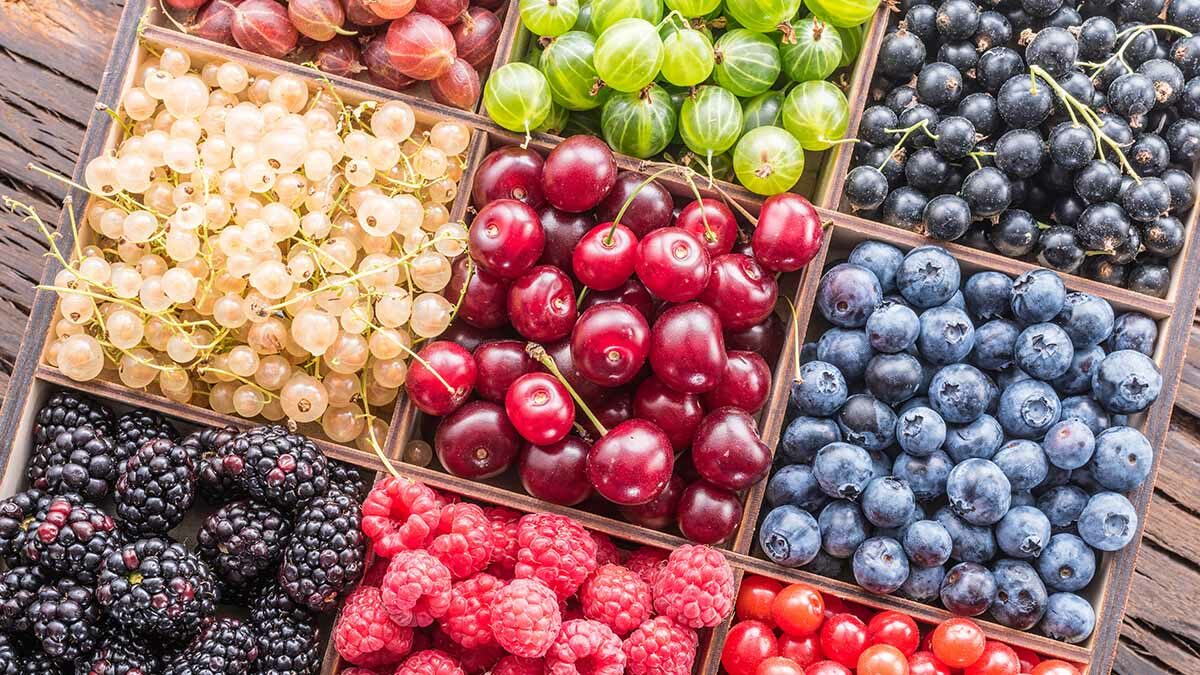What happens to our eyesight when we sit in front of a computer all day?
As researchers from the SUNY College of Optometry note in a study profiled in my video, Dietary Treatments for Computer Eye Strain, the rise in computer screens “has led to an increase in ocular and visual problems, including eye discomfort, blurring of distant objects, eye strain, and asthenopia (visual fatigue).” This has caused so-called “nearwork-induced transient myopia.” That’s when after staring at a computer screen for a while we look out the window and things start out all blurry. Our vision becomes blurred because our poor little ciliary muscles pulling at our lens are locked in this constant state of contraction to keep that near focus. Over time, this may have long-term adverse consequences.
How to Combat Computer Eye Strain
Experts in the field recommend taking 4-12 minute breaks staring out the window every hour.
We can also aid our vision with our diet. A double-blind placebo-controlled crossover study, for example, found a significant improvement in refractive values and eyestrain symptoms when subjects ate black currants compared to a placebo.
However, what passes for currants in the U.S. are usually champagne grape raisins, not actual black currants, which were banned in the U.S. a century ago at the behest of the lumber industry. The lumber industry feared that they might spread a plant disease that affects white pine (which we hardly even harvest any more). Black currants are, however, currently making a comeback (and the ban has been lifted in some states), though any anthocyanin-rich berry might have similar benefits (such as bilberries, blueberries, cranberries, black raspberries and red raspberries).
Foods vs. Supplements
Why bother with whole bilberries or black currants when we could just take anthocyanin supplements? Because, as we’ve seen over and over again, when we test supplements, we’re lucky if they actually contain what is listed on the label. Furthermore, even for products containing bilberries, one study found that labeling was often uninformative, misleading, or both, something for which the herbal supplement market is infamous. The largest study to date found that it appears most herbal supplement labels lie.
Bilberries vs. Nazis
Bilberries gained notoriety during World War II when it was said that pilots in the British Royal Air Force “were eating bilberry jam to improve their night vision.” It turns out this may have been a story concocted to fool the Germans. The real reason the Brits were able to suddenly target Nazi bombers in the middle of the night before the bombers even made it to the English channel was likely not because of bilberries, but because of a top secret new invention the British needed to keep quiet: radar.
For best results when it comes to computer eye strain, stick to whole berries with blue and red pigments, and don’t forget to give your eyes a break each hour.
For other videos on protecting our vision, check out Greens vs. Glaucoma, where I listed the best foods to help prevent glaucoma; in Dietary Prevention of Age-Related Macular Degeneration I did the same for age-related macular degeneration. I’ve also addressed the Dietary Treatment of Glaucoma.
By using a standing or treadmill desk, we can avoid some of the other adverse health effects of sitting at a computer all day. See my video Standing Up for Your Health. I’m now up to 17 miles a day!
-Michael Greger, M.D
PS: If you haven’t yet, you can subscribe to my videos for free by clicking here and watch my full 2012 – 2015 presentations Uprooting the Leading Causes of Death, More than an Apple a Day, From Table to Able, and Food as Medicine.
